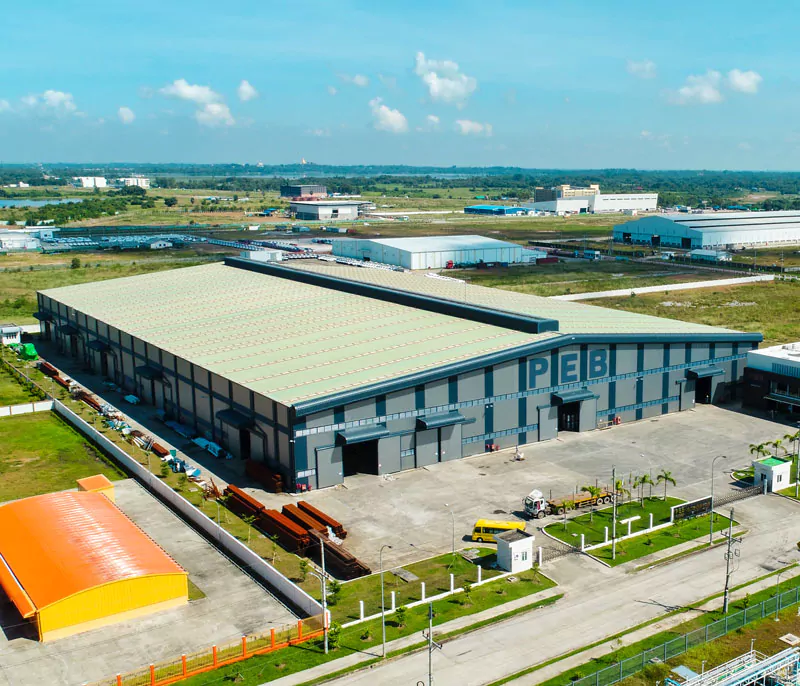In the ever-evolving world of construction, steel structures have emerged as a cornerstone of modern architecture and engineering. Known for their strength, durability, and flexibility, steel structures offer a range of benefits that make them a preferred choice for many building projects. This article delves into the advantages, applications, and key considerations of using steel structures in construction.
What is a Steel Structure?

A steel structure is a framework built primarily from steel, often used in the construction of buildings, bridges, and other large-scale projects. Steel structures are composed of steel columns, beams, and trusses that support the building’s load and provide stability. These elements are fabricated in a factory and assembled on-site, making steel structures a versatile and efficient construction option.
Advantages of Steel Structures

- Strength and Durability
Steel is renowned for its exceptional strength-to-weight ratio. It can support heavy loads and withstand various environmental conditions, including extreme weather. Steel structures are resistant to issues like rot, termites, and rust when properly treated, ensuring long-term durability. - Flexibility and Design Freedom
Steel structures offer unparalleled flexibility in design. Architects and engineers can create intricate and innovative designs that would be challenging with other materials. Steel’s adaptability allows for open floor plans, large spans, and unique architectural features, contributing to both functionality and aesthetic appeal. - Speed of Construction
The prefabrication of steel components in a controlled environment accelerates the construction process. Once on-site, these pre-manufactured parts can be quickly assembled, reducing construction time compared to traditional methods. This efficiency is particularly beneficial for projects with tight deadlines. - Cost-Effectiveness
Although the initial cost of steel may be higher than some other materials, its long-term benefits often outweigh the upfront expenses. The durability and low maintenance requirements of steel structures contribute to cost savings over time. Additionally, the speed of construction can reduce labor costs and overall project expenses. - Sustainability
Steel is a highly sustainable material. It is 100% recyclable, and many steel structures are built using recycled steel. The recycling process requires less energy compared to producing new steel, reducing the environmental impact. Steel structures also often feature energy-efficient designs, further enhancing their sustainability.
Applications of Steel Structures

- Commercial Buildings
Steel structures are commonly used in commercial construction, including office buildings, shopping malls, and industrial facilities. The flexibility in design and the ability to create large open spaces make steel an ideal choice for these types of structures. - Bridges
The strength and durability of steel make it a preferred material for bridge construction. Steel bridges can span long distances and support heavy loads, making them suitable for both road and rail applications. - Industrial Facilities
Factories, warehouses, and manufacturing plants often utilize steel structures due to their robust nature and the ability to accommodate large equipment and machinery. Steel’s resistance to fire and harsh conditions adds to its suitability for industrial environments. - Residential Buildings
While less common than in commercial and industrial applications, steel structures are increasingly being used in residential construction. Steel-framed homes offer durability, design flexibility, and resistance to environmental factors. - Sports Arenas and Public Facilities
Large-scale public facilities, such as sports arenas, exhibition halls, and convention centers, benefit from the expansive spans and structural integrity provided by steel. These structures can accommodate large crowds and complex designs while maintaining safety and functionality.
Key Considerations in Steel Structure Construction

- Design and Engineering
Proper design and engineering are crucial to ensure the structural integrity and safety of steel buildings. Professional engineers should be involved in the design process to address factors such as load distribution, seismic activity, and wind resistance. - Maintenance
While steel structures are durable, they require periodic maintenance to prevent issues such as rust and corrosion. Regular inspections and maintenance work can extend the lifespan of a steel structure and ensure its continued performance. - Cost Management
Careful planning and budgeting are essential to manage the costs associated with steel structure construction. While steel can be a cost-effective option in the long run, careful consideration of material costs, labor, and other factors is necessary for successful project management.
Conclusion

Steel structures represent a fusion of strength, versatility, and modern design. Their benefits extend beyond mere durability, offering design flexibility, cost savings, and sustainability. Whether used in commercial buildings, bridges, or industrial facilities, steel structures continue to shape the future of construction, providing solutions that meet the demands of today’s architectural and engineering challenges. As technology and design practices evolve, the role of steel structures in building the world of tomorrow remains ever significant.
